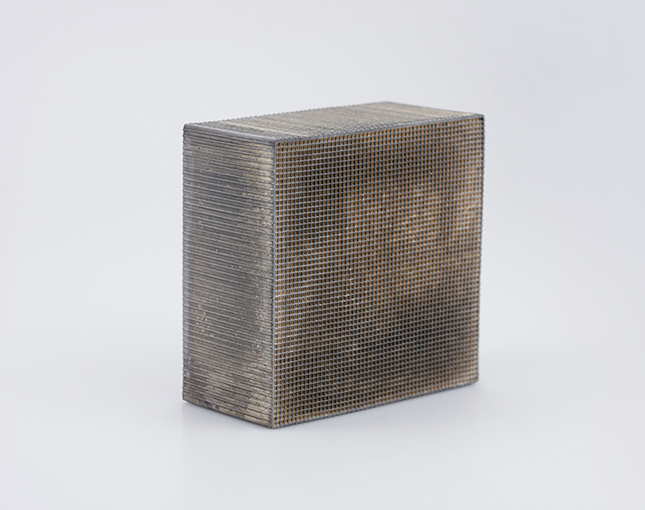Waste Incineration Catalysts for Incinerator
Waste incineration catalyst uses cordierite honeycomb ceramics as carrier, high temperature resistant rare earth as coating material, and high content of precious metals Pd and Pt as active components. It’s used in waste incinerator, waste carbide furnace installed in field of digestion, digestion furnace exhaust gas treatment system of waste incineration, as a core component of catalytic combustion chamber.
The catalyst can greatly improve the emission control level of the waste incinerator, and exert the advantage of high activity and temperature resistance in the secondary flue gas recombustion treatment, so that the flue gas can be fully processed. The flue gas emissions are far lower than the national emission standards. The CO content in the flue gas emissions is 22 mg / m3. The catalytic combustion of the flue gas in the secondary combustion chamber can fully decompose the dioxin combustion. The dioxin content in the flue gas outlet is 0.1. ng / m3, meanwhile, the waste heat of the secondary catalytic combustion reaction can be reused.
Process characteristics:
1. Low ignition temperature, 260 ℃ -280 ℃, save energy;
2, CO carbon monoxide conversion rate> 99%;
3. The content of dioxin for export is <0.5ng / m3;
4, the combustion products are harmless CO2 and H2O, no secondary pollutants;
5. The catalytic equipment has a compact structure and a small footprint.
Application areas:
Low-temperature waste cracking furnace, waste incinerator, waste carbonization digestion furnace, etc. Has been widely used in low temperature pyrolysis, low temperature gasification, low temperature magnetization and other waste incineration technology equipment.
Note:
1. The catalyst should be installed using steel seal installation, installation of catalytic bed is divided into 2 sections, channels to align; first section temperature should be controlled below 800 °C.
2. Catalyst prior to use fresh air preheat to 400 °C can pass into the garbage to the top (digestion) of exhaust gas, otherwise easily cause carbon deposition or runaway phenomenon.
3. Low temperature, large amounts of waste incineration (digestion) exhaust in catalytic bed, resulting in "smother", causing temporary catalyst deactivation.
4. Sulphur, phosphorus, arsenic, halogen compounds, heavy metal compounds react with active components of catalyst, resulting in permanent inactivation; should be used in flue gas pretreatment of acidic gases and impurities.
5. Dust, soot, high-boiling viscous material attached to the catalyst surface, covering the catalyst activity, resulting in loss of catalytic role should be used to filter gas pretreatment.
6. The catalytic bed 1 long-term high temperature above 800 °C will make the catalyst carrier and active components of reunion or sintering, resulting in a substantial reduction in the number of active sites, the final deactivation; catalyst bed 1 should be timely heat.
Technical Parameters:
- SIgnition temperature: 260°C-280°C
- The highest temperature: 800°C
- Optimal operation temperature: 300°C-500 °C
- At 450 °C CO conversion rate: >99%
- Heap than weight: 0.72±0.05g/mL
- 450 °C airspeed H-1: >5000
- Crushing strength: ≥12MPa
- Service life: 8000-16000 hours (1~2 years)
- Coating load: >8.0%


